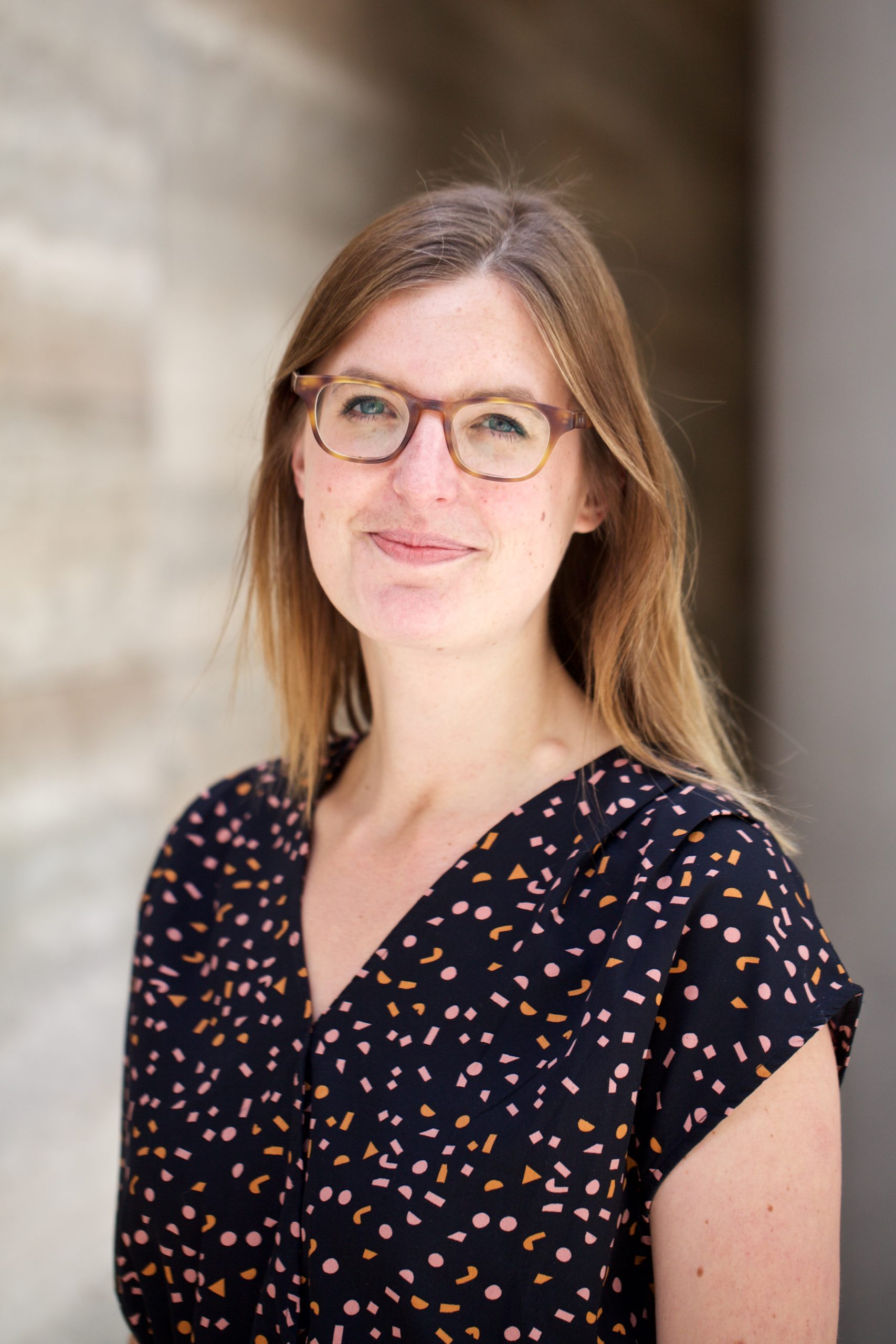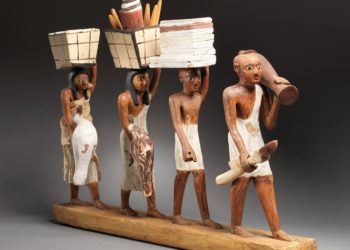Today we feature an interview with Martha Sedgwick, SAGE’s vice president for Product Innovation. I have had the privilege of getting to know Martha, as well as working with some members of her team, through our shared interests in improving discovery and access. Astute readers will recall that this is actually the second interview with Martha featured in the Kitchen — the first focused on approaches to innovation, while today we focus on strategy.
Many readers will know SAGE as a large and independent scholarly publisher, with a track record of fostering the development of new and interdisciplinary fields in the social sciences. Like other large publishers, SAGE is pursuing a strategy to move beyond an exclusive focus on content to offer as well an array of services and tools. While it is easy to collapse these large publisher strategies together, the differences they take in approach and emphasis are important. In today’s interview, Martha speaks in some detail about the elements of SAGE’s strategic directions, including a steady pace of acquisitions and a vision for how discrete services can collectively serve the needs of social scientists and other user communities.
Martha, tell me a little bit about your background and your role at SAGE.
My background is in product management. I joined SAGE as our first product manager back in 2008 when the company started to explore how to respond to the transition to digital for students and researchers and what opportunities existed to support that transition in the social and behavioral sciences. The first product I worked on was SAGE Research Methods, which I still feel affectionately towards! That product has come a long way since I first launched it – it’s a really incredible resource for content and tools to support the selection and application of research methods in the social and behavioral sciences.
Today I’m VP of Product Innovation, responsible for our product management and UX teams working to develop our digital library resources as well as our Technology from SAGE portfolio. It’s an amazing job, working with a brilliant global team.
I find Sara Miller McCune’s founding story of SAGE inspiring: we were founded on innovation in 1965 through Sara’s ambition to publish in new areas of social science research. Sara has kept the company independently owned over the last 5+ decades and has recently guaranteed that the company will remain independent indefinitely by transferring her voting shares to a trust. This guarantee has made us free to think for the long-term, to be true partners to the library, and think big in terms of making positive societal impact. I like to hope that my role is to continue that independent innovation in the area of new publishing formats and services that build on that legacy, continuing to “build bridges to knowledge” — our mission — in new ways.
I’ve been tracking SAGE’s investments for a number of years. I have seen a series of investments in the social sciences space, in ways that really build on subject matter depth and relationships from the primary publishing that SAGE has long been known for — for example, the various tools that have been brought together as SAGE Ocean, as well as DataPlanet. Tell us a little bit about this strategy and how it is developing.
Yes, the focus of our product innovation over the past decade has been very much anchored in social science teaching and research. Our strategy has been to build upon the expertise and the networks within our textbook and journal publishing programs to bring entirely new products and services to life to respond to new demands amongst students, researchers, and teaching faculty. This has resulted in many new publishing products over the past decade including our SAGE Video collections that respond to the demand for high quality and trustworthy visual media for student learning; our interactive statistical database: Data Planet; and our Business Cases collection of international cases with a library-centered business model.
We launched SAGE Ocean a few years ago as an initiative to respond to emerging social research that was making use of the big data now available to provide new insights into society and human behavior. As the world’s leading research methods publisher, we felt a responsibility to track this trend and explore the new skills, tools and ethical frameworks required for social researchers working with big data and new tech. Through that initiative we now publish SAGE Campus online courses to support skills, maintain an open Research Tools Directory, have provided seed funding to new software tools through our Concept Grants program, run an events program to support interdisciplinary interactions including the Social Science FOO Camp that we run annually with O’Reilly and Facebook to bring together social scientists, policy makers and tech leaders for a weekend.
So our approach has been a combination of building, buying and investing, but all backed by the quality, innovation, and independent spirit that the SAGE brand guarantees.
And how does it work from a sales perspective? Are you able to leverage existing sales channels for these newer social sciences products? Are you bundling tools with publications into a “big deal” model?
Our customers tell us that they want to acquire our products in different ways so we offer quite a bit of choice when it comes to sales models. We do have a single offering of the newer products from SAGE called SAGE Explorer which is really your one stop shop for social science learning resources. But we also offer Evidence Based Acquisition or smaller package offerings for collections within each of the publishing lines. Almost all of our products also have options for perpetual access as well as subscription.
And separately, there is another portfolio of products that are more about serving users broadly and the libraries that serve them, rather than social scientists specifically. It seems this strategy has recently culminated in the announcement of its Technology from SAGE portfolio. What is in the portfolio and what does it mean to see them as a portfolio?
That’s right. Our experience building new digital products and evolving our publishing platforms has made us acutely aware of workflow issues faced by students and researchers working across publisher platforms. In this new area of innovation at SAGE we are investing in publisher-agnostic technology that can bring down barriers to knowledge and make learning and research easier for faculty and students.
An inspiration for one of the solutions that we brought into SAGE was a talk you did at the STM Frankfurt meeting back in 2015 when you raised the huge issue of the remote access journey across publishing platforms. I was in the audience watching you highlight the SAGE Journals platform as an example of this problem and a librarian at the University of Utrecht, Johan Tilstra, read your article on the topic on Scholarly Kitchen. He went on to build Lean Library to solve that problem and we were very pleased to bring Lean Library into SAGE in 2018.
Lean Library Access is one of a number of technology services that together we call Technology from SAGE. We have taken a portfolio approach to Tech from SAGE that preserves the brand and organization of each of the businesses that join us whilst SAGE invests in their growth and innovations. Each service is designed to improve the student and researcher workflow around content and amplify the value of the academic library:
- Talis Aspire is a Resource List Tool that connects faculty with library holdings and manages copyright clearance for use of articles from within the resource list.
- Talis Elevate offers collaborative annotation tools around core texts to support faculty and student interaction ahead of class.
- Quartex, from Adam Matthew, allows librarians to manage and showcase archival collections, making use of powerful search and presentation tools.
- I am really excited about the new Lean Library Futures service that integrates with the library’s existing services to deliver them at the point of need right into the patron’s workflow, whether that is unveiling discovery service results alongside Google Scholar or a link to a LibGuide alongside a relevant Wikipedia entry.
I’d love to hear more about why this “libraries and users” category is important, how if at all it connects to the social sciences tools, and why it makes sense for SAGE.
We see the library as fundamental to learning and research on campus and have worked closely with the library community over the past decade to support our product innovation. We see the library as a key partner in achieving our mission to build bridges to knowledge and in enabling wide access across the student body. The role of the library is transforming with the changes brought on by OA and OER as well as the acceleration to digital driven by the pandemic and we think there are ways that we can support that transformation with new services that amplify library value.
We recently supported the team at Lean Library to conduct a major research study into the changing role of the library and library/faculty relations. The results reinforce the critical role of the library but also point towards opportunities to evolve and deliver more value. I’d encourage the Scholarly Kitchen readers to download the report if you haven’t already – we donate $1 for every download to Computer Aid to fund a project at the University of Zimbabwe that provides technology and training.
And, why are you “announcing” it now, or branding it, and what do you hope the community will take from it?
We are keen to strengthen SAGE’s endorsement and association with these exciting businesses and are actively looking for the next organizations to join the portfolio. I’m really keen to use this announcement to build new relationships with up-and-coming innovators who are leading with library-focused solutions to make learning and research easier. We are looking at many ways to do this, and I’m very pleased to share that we have just announced this month a new Technology from SAGE Innovators Award in partnership with ER&L that will help us discover and help cultivate new ideas from talented librarians.
Is this portfolio growing into an alternative to a traditional library systems vendor, such as Ex Libris (now a part of Clarivate)? Or do you see it as complementary?
We have carefully selected the companies in the portfolio based upon where we see needs and can identify smart people doing innovative things to respond to those needs. We’re not acquiring businesses to integrate and dilute them, but to invest in their teams to grow. Each of the services today support seamless integrations into established library systems – you can check some of the partnerships that Lean Library have in place here.
Finally, what should we be looking out for next?
We will continue to focus our innovation on trends in social science learning and research and new ways we can work to support libraries as they adapt to the future with workflow tools that deliver library value.
I’m particularly interested to explore how we can continue to work with libraries to develop a better “curated discovery” experience for students that includes, but also goes beyond, the library collection to the open web. We have a new resource coming out in 2022 that facilitates the discovery and dissemination of open educational research methods resources via a partnership with the Nuffield Foundation and Economic and Social Research Council in the UK. And the Lean Library team have a cool roadmap for 2022 with their Futures service as they continue to innovate with new ways to bring the librarian into the patron workflow to guide their discovery journey. I know there is more we can continue to do to support learners as they sift through the huge amount of information available to understand the landscape and discover what they need.
We are continuing to experiment with new digital formats that support different learning styles and tech that creates new learning experiences. You might have seen the recent VR experience we developed with Bodyswaps to support Mental Health Nurse Training. I’m also interested in how audio and video can support student learning on the go and how we might continue to deliver pedagogy in new ways.
Many of the innovations I have mentioned have been possible through partnerships. We often say great relationships are the bedrock of great work, and I’m always keen to explore opportunities to work with individuals or organizations who align with our mission and can augment our experience and expertise with something new. If your blog readers have thoughts or ideas, they should feel free to reach out.
Discussion
1 Thought on "SAGE’s Strategic Investments: An Interview with Martha Sedgwick"
Of the commercial publishers, I’ve got something of a soft spot for SAGE. I like their journals and their way of doing business. I was particularly intrigued by the SAGE-SMM trust ownership model. I know it’s a little off topic but I would love to read more about it – who are the trustees? Who are the beneficial owners?
Anyway, thanks for the interview and my best wishes to Martha Sedgwick and her colleagues




